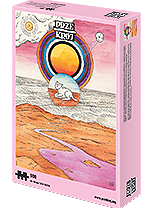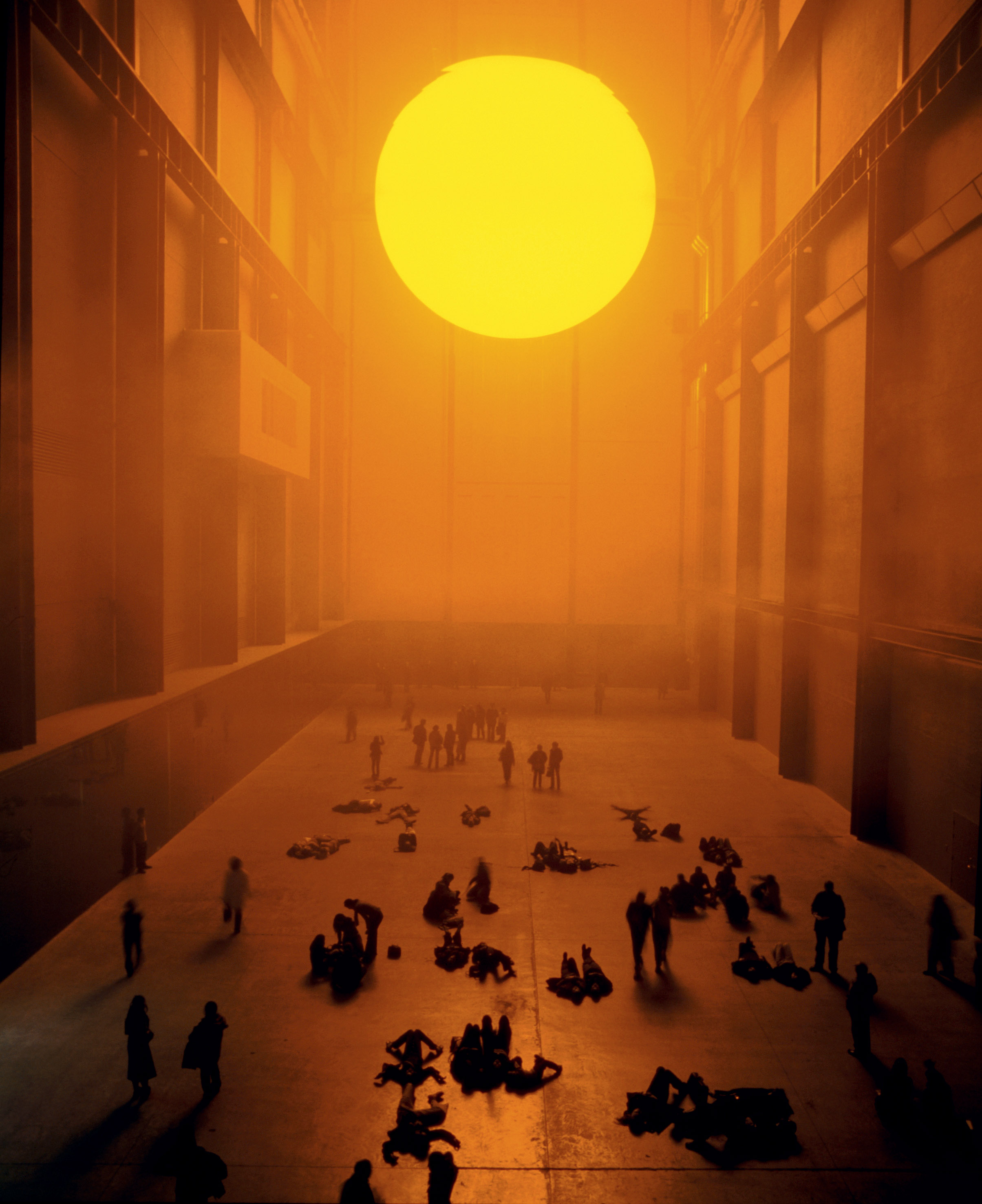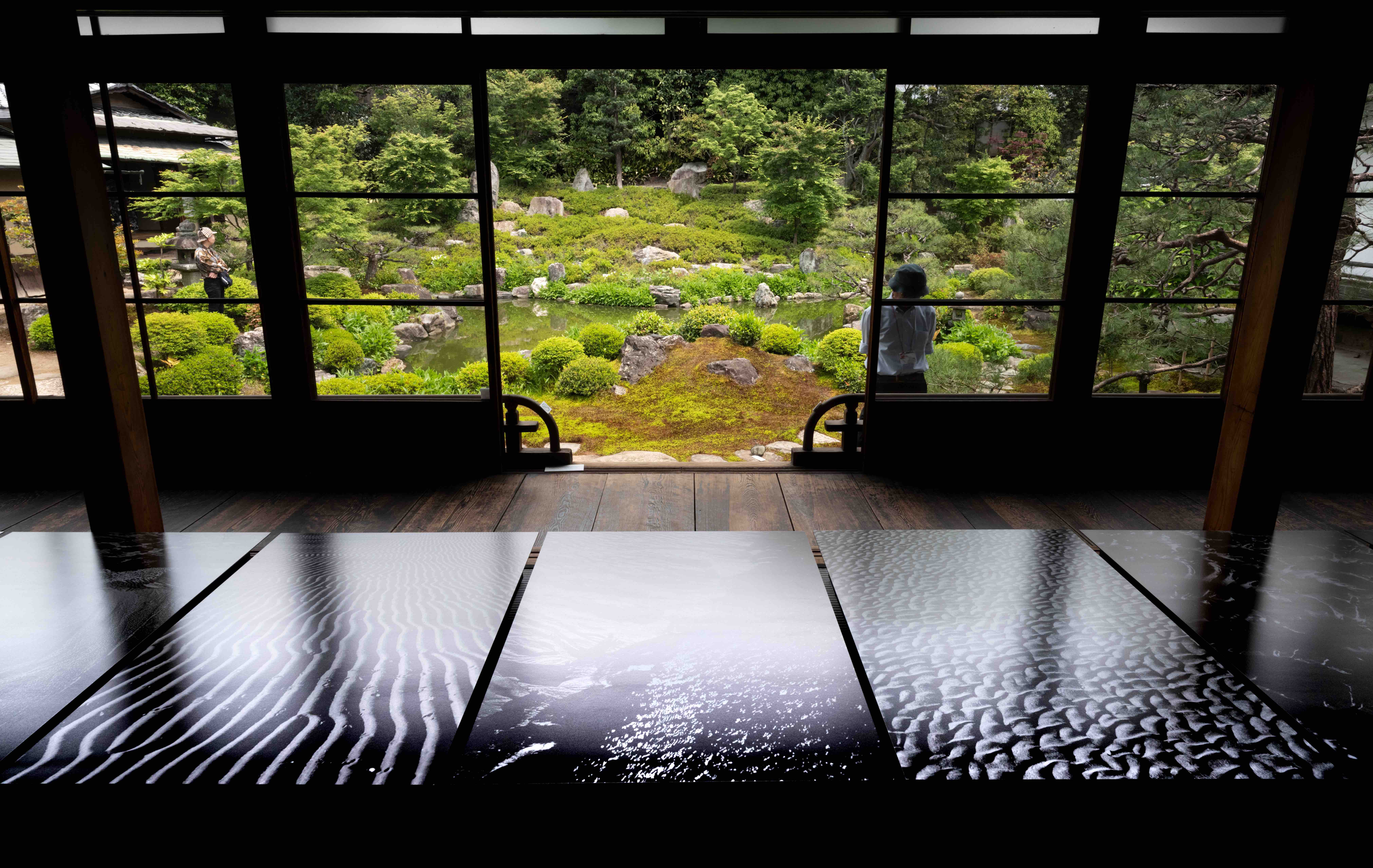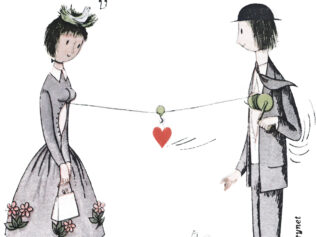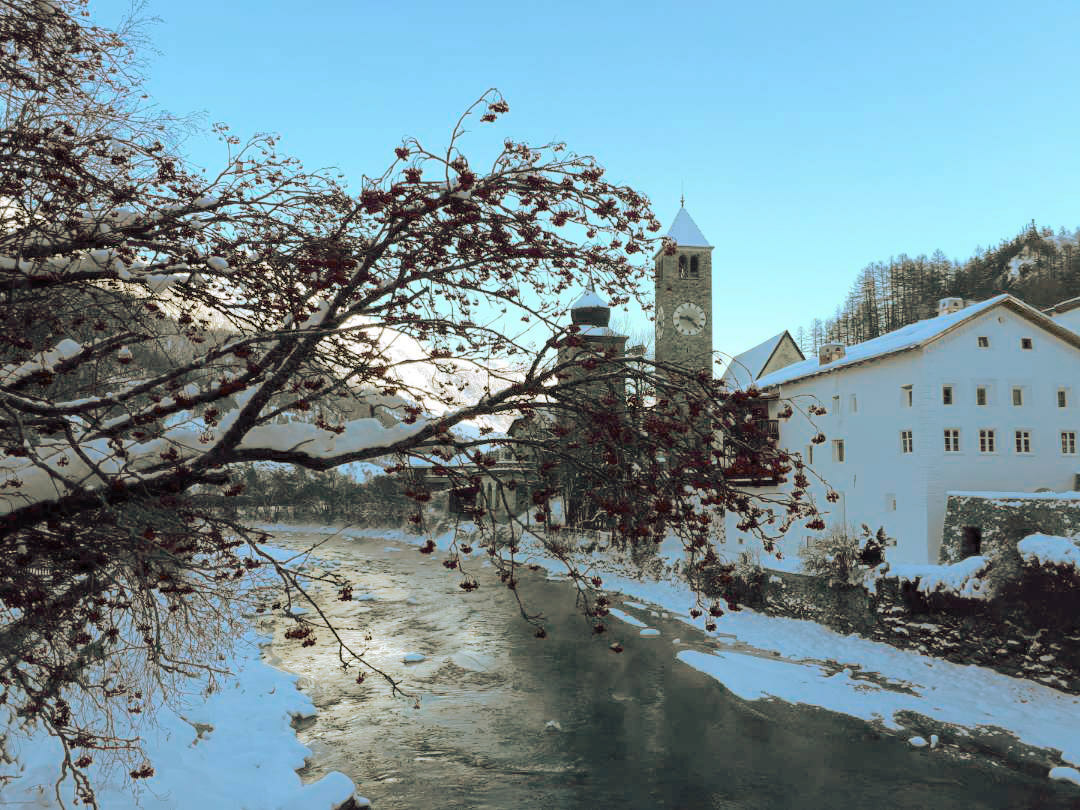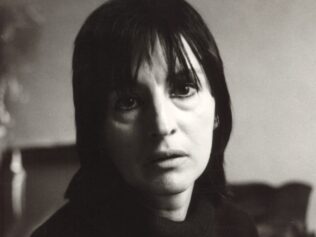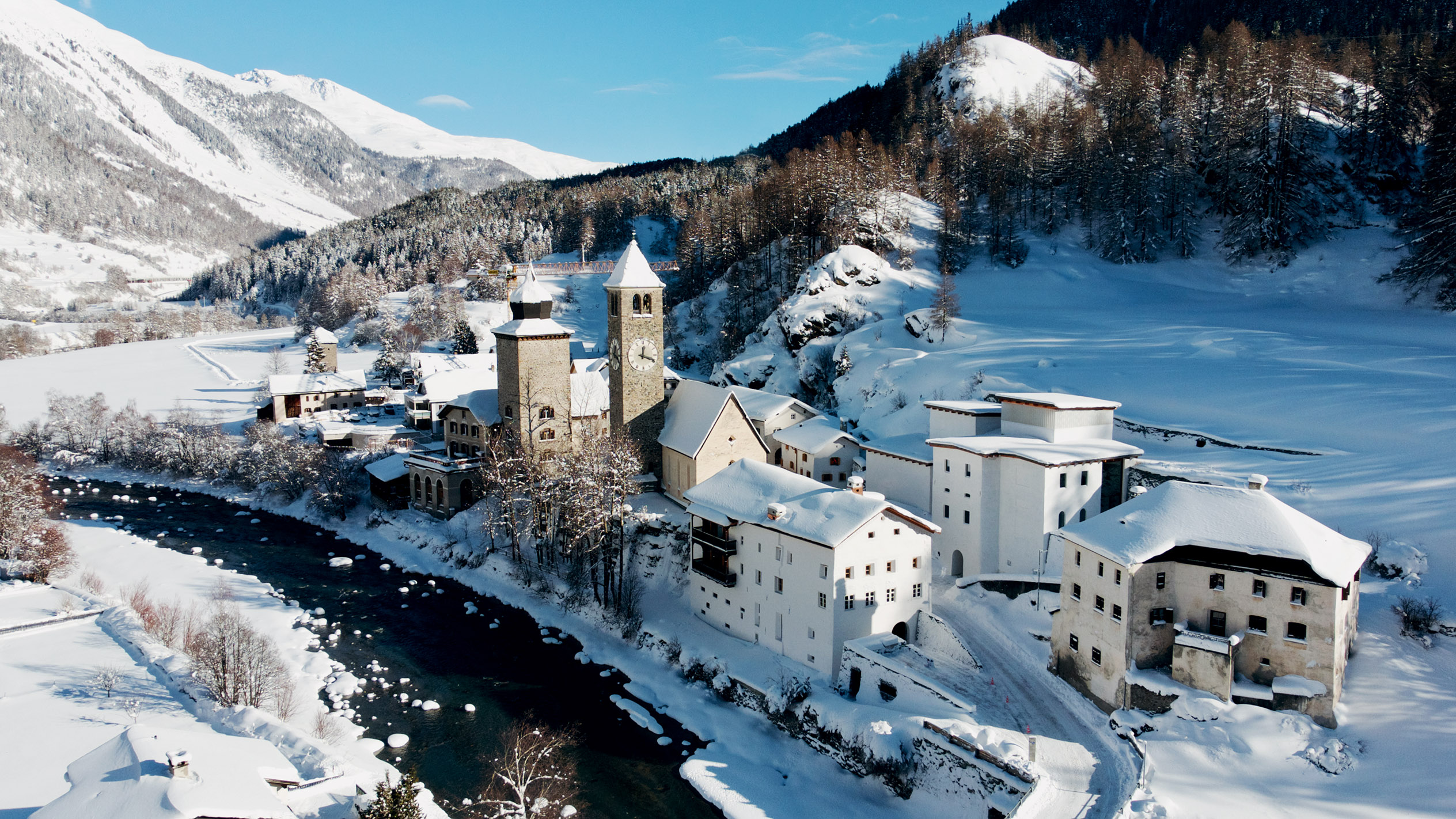
He lit the sun over London, melted a glacier in Paris, and changed the colour of rivers in Iceland. Jan Pelczar talks to Olafur Eliasson, the man who sculpts with light, water and air.
On my way to meet Olafur Eliasson, I walk through a large part of Berlin. It is a cold but sunny day. I hope this is a good omen. For a while now, the artist has been interested in the influence of weather on the relationships between people. We talk at a library in the heart of the Olafur Eliasson Studio that employs more than 130 people, at a table under a lamp designed by the artist himself.
Jan Pelczar: Does the Olafur Eliasson Studio resemble the studios of other artists, or rather a science lab?
Olafur Eliasson: My interest in science always comes from an artistic point of view. I approach science with an artist’s licence and I enjoy more freedom than scientists. That’s why my studio is very different from their laboratories. I have different motivations and I don’t use scientific methods.
There are lots of glass globes and kaleidoscopes around here.
For many years, I worked on complex polyhedrons. I studied various combinations of forms and materials; I built an entire catalogue of shapes. I developed many of them with the late Einar Thorsteinn. We worked together until his retirement in 2014. Einar was a true visionary; he approached global spatial questions in a unique way. He had a remarkable talent for conjuring up complex polyhedrons and non-Euclidean spaces in his head, without the use of a computer. For me, such geometric forms are the answer to contemporary spatial problems, to the rectilinear and rectangular approach to the man-made environment. This expands architectural possibilities.
How can an artist create a star or a waterfall? Are you drawn by the idea itself, or also by the process of overcoming technical inconveniences?
I usually start with a vague idea of what I want. It’s a kind of feeling that has to go through various stages of verbalization before I can begin to think about the technical aspects of its implementation. Once I am clear about my intentions, I begin working with the team. In the studios, we try to work out the technical difficulties; sometimes we face challenges that change the shape of the work itself. In 2015, on the occasion of the Nobel Prize award ceremony in Stockholm, I worked on the Your Star installation [from 5th to 13th December, a ‘star’ shone over the City Hall in Stockholm. It was in fact an LED lamp powered by solar energy accumulated in the summer in a lithium battery – author’s note]. First, we had to obtain the appropriate permits in order to use the airspace, which meant a lot of bureaucracy. Stockholm was extremely windy at the time, and the balloon carrying our installation could only rise in appropriate conditions. In such situations, I am always grateful that I have a team of people who deal with such problems. But overcoming technical difficulties is an important stage in the creation of a work of art. The process during which an idea turns into artwork fascinates me. What transforms thought into action? Turning words into deeds is the key element in creating art, and creativity in general. When I teach, I always tell students that a work of art is not an idea itself. Artwork is the realization of this idea. True art exists in the confrontation with the viewer.
One of the key elements of your work is light. What is your favourite kind of light? Or is natural light best?
I come from Scandinavia, where the amount of sunlight is limited for most of the year. That’s why I have a special relationship with light. I don’t have a favourite kind. I am interested in how light influences our perception of the world. Daylight changes depending on the location, weather conditions, time of day and time of year. I’ve been working on this for many years, in many of my pieces. One of them was Lichtdecke Kandinsky from 2006. In the gallery in Lenbachhaus, Munich, I altered the lighting in the hall with paintings by Wassily Kandinsky. My aim was to recreate light from different parts of the world, with different properties. A year earlier, I created the facade of the Harpa Concert Hall and Conference Centre in Reykjavík. The two-tone glass changes depending on the light conditions, the weather, and the angle at which we look at it.
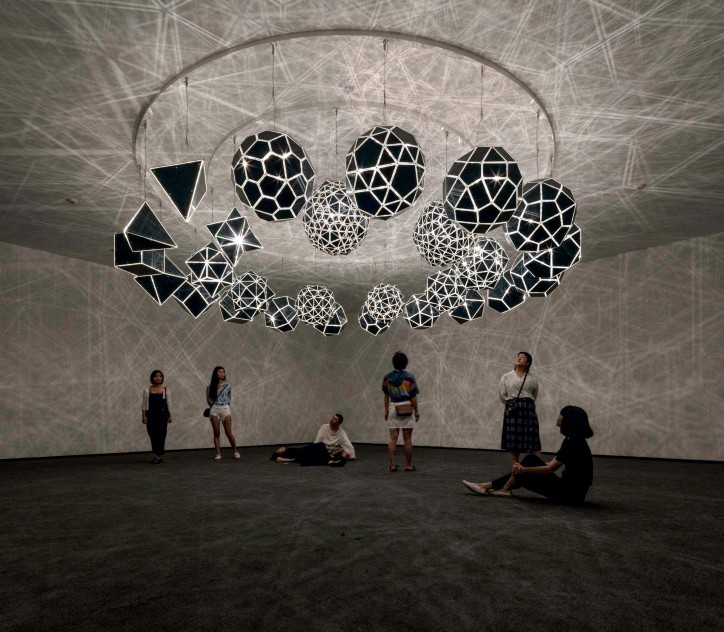
What material has the best reactions with light? What physical properties must it have? Is transparency the most important, as in the case of glass?
The most interesting thing is that light is something that is not really visible. In fact, it is just the condition of seeing. Just like the air we breathe, we tend to take light for granted. Many works of art make light visible. This is what fascinates me in illuminating a space with yellow light of one frequency. When we enter such a space, the light radically changes the way we experience our environment. When we bathe a room in a single colour, everything seems grey. Our eyes gradually get used to light, and we can notice more details. When you switch to white light, the world gains an entire variety of colours. You can begin to perceive your surroundings anew. The ways in which light influences our way of seeing the world motivated me to create the Little Sun project. Billions of people in the world live without permanent access to electricity. In many countries, children have to do their homework by candlelight or oil lamps. This is not only unhealthy and dangerous, but also forces them to become accustomed to poor light quality. Little Sun is a solar lamp that can give more people access to electric light.
We perceive the sun as the source of life, but it is essentially the star of death. No known form of life can survive close contact with the sun.
This is a pessimistic, miserable way to describe the sun. I don’t think of it as the star of death. It is not only a source of life, but also of energy. Thanks to photosynthesis we can breathe and eat, the quality of the atmosphere improves. Today, when our climate is the result of human activity, in the era of the greenhouse effect, the sun has also become a threat, but this is not its fault. Let us not blame the sun for what man created. Our problems with climate are the result of our activities, and not exposure to the sun’s power. The sun offers us opportunities, not obstacles.
I will remain a pessimist. It seems to me that we do not use the opportunity, and the obstacles are high.
I created The Weather Project at the beginning of the global debate on climate change. Professionals have been discussing this since the 1980s. The Kyoto Protocol, negotiated in 1997, drew the world’s attention to global warming, but in 2003 it was still not a widely-addressed problem. I used newspaper headlines in the exhibition catalogue. One of them was particularly attention-grabbing, it came from a British tabloid, The Sun: ‘The hottest day in history’. I found it funny that a newspaper called The Sun would run such a headline. The need to be more sensitive to the consequences of our behaviour grew instinctively – we began to be afraid that we were losing control. The exhibition was a success because, among other things, people became aware that the condition of the Earth’s atmosphere – immaterial, ephemeral – was becoming increasingly important.
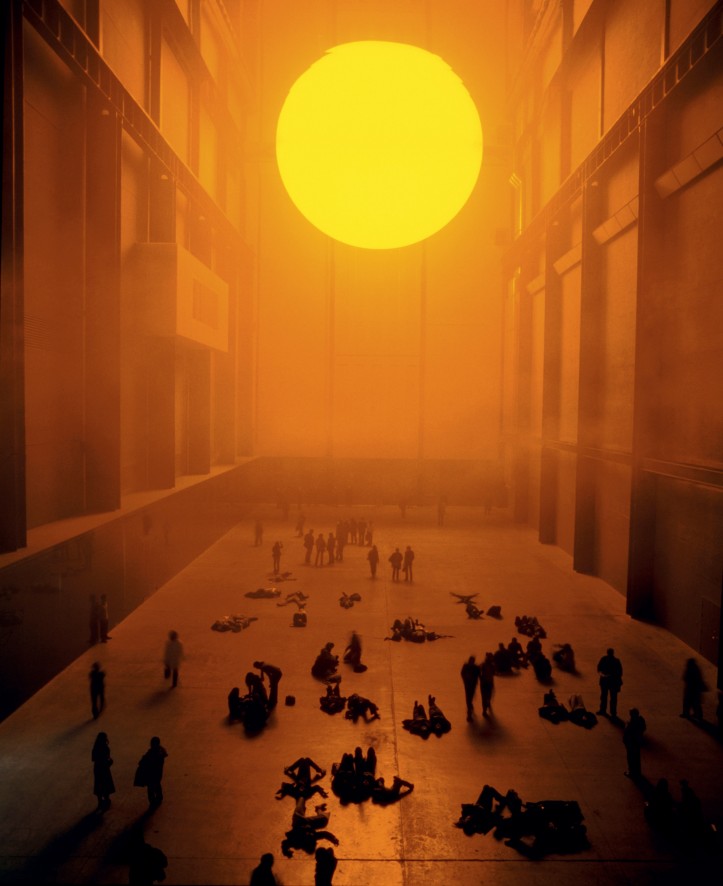
When was it most difficult to recreate the sun? In 2003, at Tate Modern in London, where viewers became a part of The Weather Project, or in 1999 over the streets of Utrecht, where people watched the double sunset?
In 2012, I also recreated the sunrise in Dnipro. You could see it from the other end of town in the morning. From a technical point of view, creating the illusion of the sun is not particularly difficult. At the Tate, the biggest problem was to find companies that could install mirrors on the ceiling: 4000 square metres of mirrored panels had to be executed to perfection, so that people could recognize themselves when they looked up. We found a company producing thin, high-quality mirrors in Germany. We installed 20 panels on the floor, and then lifted the installation and fixed it to the ceiling. A large part of the work was not visible to the public. We also had to remove all rubbish bins, signs and donation boxes from the Turbine Hall. We cleared the space so that the visitors could only see their reflection.
At that time you were fascinated by the unpredictability of the weather. And of course, with each year, it does indeed become less predictable.
The Weather Project was meant to draw people’s attention to that which is invisible. In a city, the weather becomes the equivalent of nature. You walk down the street and you see the weather as nature. Weather operates according to democratic values. We can talk about the weather, have completely different points of view, disagree about everything, but still remain friends.
Isn’t weather affected by our different perceptions of it?
It is a space where groups consisting of different people are formed. Usually, when people disagree or differ from each other, two groups are formed: an inner and outer group. The current populist tendencies in politics resemble such a scenario. The polarization between groups is growing, feeding on populist language. Everything is defined in the context of the expansion of the second group; the notion of rejection emerges. And the weather is a fundamentally common concept. To some extent, I used metaphors with the theme of The Weather Project at Tate Modern. I wanted to draw attention to the weather as a space where we are all guests, regardless of whether we are in the city or in the countryside.
Where will your new exhibition at Tate Modern, scheduled to open in July, lead us?
This time I will not build anything in the Turbine Hall. It will be a classic retrospective. You will see an overview of pieces from 23 years of work. I am more and more interested in interacting with the real world. I’m working hard to make the Tate even more involved in the life of the local community: the problems of the city, the region, England, the UK, Brexit, the problems of the European Union, and the world. I don’t have an answer yet, but I’m sure that my works touch upon it. They have a narrative, focus on certain experiences, they shape a discourse, but they also ask questions about identity, belonging and the perception of reality. That’s why I organized another Ice Watch at Tate Modern in December 2018.
You brought almost 100 tonnes of glacier from a Greenlandic fjord to London. The first action of this series took place in front of the Panthéon, during a climate change conference held in Paris.
The UN also invited me with this project to the COP in Katowice. But the space we were offered there was not public enough, and we did not find funding. An alternative, smaller climate summit was held in London at that time, so we decided to exhibit the glaciers near Tate Modern. I was pleased that I could support the debate on climate change there. I am trying to open up the museum to the outside world. In July, I will show something special outside the gallery. As always, I am interested in pushing art out of its comfort zone, looking for new contexts, new audiences. The Little Sun project will also be exhibited at the Tate. I want to show that as an artist I am trying to use my knowledge and experience outside the art world, which is supposedly empathetic and compassionate. Artists want to be the moral compass of society. But to be honest, this niche is full of elitism and decisions based on marketing. The big institutions are run by numerous white, grey-haired men. If we consider ourselves to be the first order of social change, then we are failing miserably as we speak. We are not helping to realize the values that we’re allegedly fighting for.
Parts of this interview have been edited and condensed for clarity and brevity.
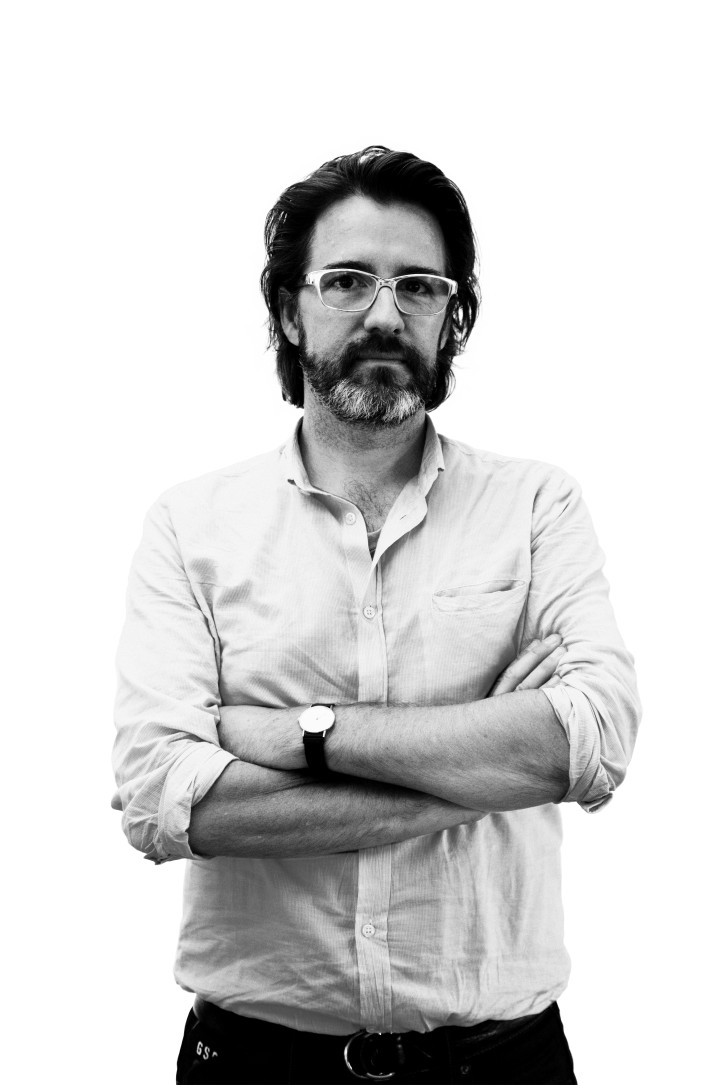
Olafur Eliasson:
A Danish-Icelandic artist. He creates (often monumental) sculptures and installations using materials such as light, air and water. He is interested in perception and awareness. In his opinion, art is a way of turning ideas into deeds. You will be able to see for yourself how that works out in practice at a retrospective exhibition of his work this summer at Tate Modern in London.
Introduction translated by Joanna Figiel

